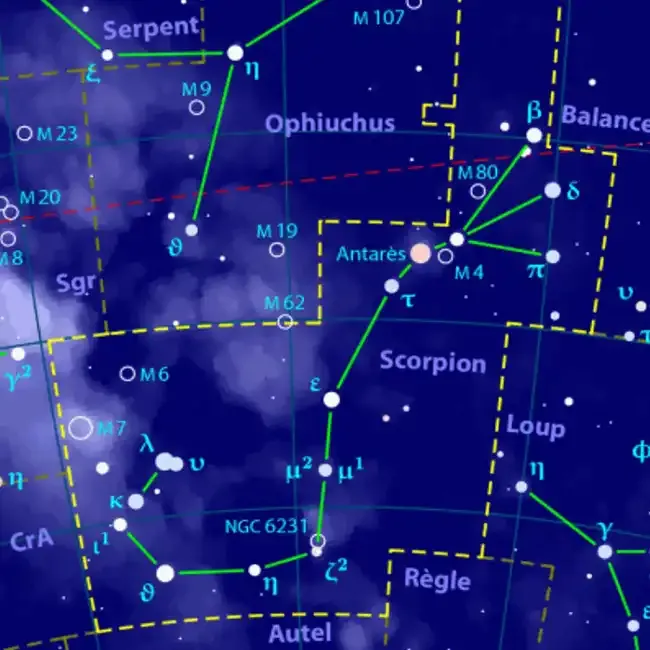
Scorpius is one of the most recognizable constellations in the night sky, known for its distinct shape resembling a scorpion. It is a prominent constellation in the Southern Hemisphere and is best observed during the summer months.
Scorpius is a large constellation that stretches across the sky, with its most notable feature being the curved line of stars that form the scorpion's tail and the bright star Antares at the heart of the scorpion. The constellation is located near the Milky Way, making it a rich area for stargazing with numerous star clusters and nebulae visible.
Key Features
Scorpius is best known for its characteristic hook-like tail and the bright red star Antares, often referred to as the "heart of the scorpion." The constellation also includes several open star clusters, such as M6 (the Butterfly Cluster) and M7 (the Ptolemy Cluster), both visible to the naked eye under dark skies. The region is also home to the Cat’s Paw Nebula (NGC 6334) and the War and Peace Nebula (NGC 6357).
Mythology
In Greek mythology, Scorpius represents the scorpion that was sent by the goddess Artemis (or sometimes Gaia) to kill Orion, the hunter. According to the myth, Orion had boasted that he could kill all the animals on Earth, which angered the gods. The scorpion stung Orion, leading to his death. In honor of this event, both Orion and Scorpius were placed in the sky, but on opposite sides, ensuring that they never appear in the sky simultaneously.
Notable Stars
- Antares (Alpha Scorpii): A red supergiant star and the brightest in Scorpius, often called the "Rival of Mars" due to its red hue.
- Shaula (Lambda Scorpii): The second brightest star in the constellation, marking the tip of the scorpion's tail.
- Sargas (Theta Scorpii): A bright giant star located near the tail of the scorpion.
Visibility
Scorpius is most visible in the Southern Hemisphere from May to August. In the Northern Hemisphere, it is best seen during the summer months, appearing low on the southern horizon. The constellation is located between the constellations Libra to the west and Sagittarius to the east.
Tips for Observing
- Location: For the best view, find a location with a clear view of the southern horizon, especially if observing from the Northern Hemisphere.
- Timing: Observe Scorpius during the summer months when it is highest in the sky.
- Equipment: A pair of binoculars or a small telescope will enhance the view, allowing you to see the star clusters and nebulae within the constellation.
